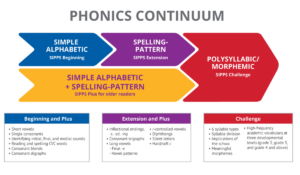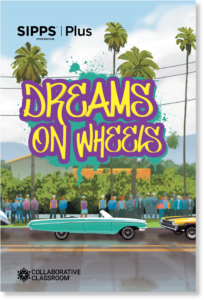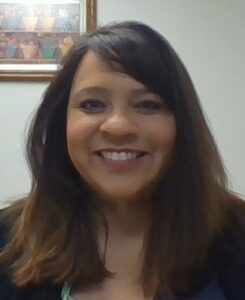How do we help striving readers in upper-elementary and middle school persevere and succeed?
In the report Teaching Adolescents to Become Learners, published by the University of Chicago Consortium on Chicago School Research, the authors state that “[w]hile some students are more likely to persist in tasks or exhibit self-discipline than others, all students are more likely to demonstrate perseverance if the school or classroom context helps them develop positive mindsets and effective learning strategies.”[1]
The report distills much of the research on mindset into four key beliefs that, if adopted by students, may yield academic perseverance:
- I belong in this academic community.
- My ability and competence grow with my effort.
- I can succeed at this.
- This work has value for me.[2]
One of my goals as an instructional coach is to help older striving readers embrace these four key beliefs and persevere. I also see my job as a coach as making connections between theory, research, and existing schema for teaching and learning within our school district.
[W]hen we create environments that foster competence, autonomy, and human connection, students are more intrinsically motivated to persevere.
Self-determination theory asserts that when we create environments that foster competence, autonomy, and human connection, students are more intrinsically motivated to persevere.
While considering an existing practice at the Greeley-Evans School District, I discovered several aspects of self-determination theory already incorporated into daily practice.
Take, for example, SIPPS Challenge Level: this level of the SIPPS program is designed to address polysyllabic/morphemic phase of reading development. At Greeley-Evans we rely on SIPPS Challenge Level to equip our students with skills in structural analysis that help increase reading achievement.
We consistently see upward trends in students’ mastery of foundational standards in English language arts and, more importantly, in their ability to apply these skills independently to increasingly complex texts.

Most of our students experienced success with SIPPS Challenge Level, but we still had a small number of fourth- and fifth-grade students who were unable to decode single-syllable words and therefore couldn’t benefit from the intervention.
We tried our best to support these fourth- and fifth-graders by providing instruction in basic phonics using a variety of other programs, but year after year I found it difficult to find connected texts that both engaged and honored our older striving readers.
This all changed one day when I came across a copy of Dreams on Wheels, the decodable reader provided in the SIPPS Plus kit , in an instructional closet.
This all changed one day when I came across a copy of Dreams on Wheels, the decodable reader provided in the SIPPS Plus kit , in an instructional closet

The Dreams on Wheels anthology, part of SIPPS Plus
As I flipped through the book, I was immediately drawn in by the appealing photographs, engaging text features, and high-interest topics. A lightbulb turned on in my brain—I knew this book would captivate even our most reluctant older readers.
This lucky find was the beginning of something new: we decided to pilot SIPPS Plus as an intervention for striving fifth grade readers who weren’t quite ready for the SIPPS Challenge Level.
As part of SIPPS Plus, these fifth graders got to read Dreams on Wheels. This decodable, high-interest book was indeed sophisticated enough to engage our fifth-grade students and create deep discussion. The SIPPS progress monitoring and mastery tests confirmed that our students were growing as readers (see data below). Daily instruction was driven by listening to students read and by our daily observations during the lessons.
Beginning- to Middle-of-Year DIBELS Growth Data After Four Months of SIPPS Plus

What made SIPPS Plus successful with our older readers, in contrast to other programs we had tried?
Reflecting on the four key beliefs that yield perseverance in students, I realize they are all present in SIPPS Plus lessons.
I believe that it goes back to self-determination theory. Reflecting on the four key beliefs that yield perseverance in students, I realize they are all present in SIPPS Plus.
As they moved through the lessons, our older striving readers adopted the four beliefs:
- Students’ perceptions of their own intelligence and capability improve as they progress as readers. I belong in this academic community. I can succeed at this.
- An important characteristic of every SIPPS Plus lesson is active student involvement. Throughout the intervention, students come to understand that their reading success depends on the effort they make. They have multiple opportunities to demonstrate this understanding as they engage in the program’s routines. My ability and competence grow with my effort.
- These clear, consistent, concise routines enable students to respond together, contributing to their sense of belonging—particularly when teachers expect the group to respect one another as learners. I belong in this academic community.
- As students develop their reading ability, they begin to see that the work has value for them. This work has value for me.
Given our previous struggles with other programs, I was at first unsure how students would respond to SIPPS Plus. Now I can’t imagine teaching older striving readers without it!
Citations
[1] Farrington, C. A., Roderick, M., Allensworth, E., Nagaoka, J., Keyes, T. S., Johnson, D. W., & Beechum, N. O. (2012). Teaching adolescents to become learners. The role of noncognitive factors in shaping performance: A critical literature review. Chicago: University of Chicago Consortium on Chicago School Research.
[2] Farrington, Roderick, Allensworth, Nagaoka, Keyes, Johnson, & Beechum. Teaching adolescents to become learners. 10.
About the Author

Jennifer Rios Alers has been an instructional coach for the past 13 years and is a 13-year veteran teacher in the Greeley-Evans School District elementary schools in Colorado. She now supports educators across the district in the implementation of SIPPS as a consultant for Collaborative Classroom. Jennifer is always deepening her understanding of the content area of literacy along with related pedagogy, and she co-authored an action-based research paper titled “Exploring Second Grade Curriculum to Support Writing Growth and Development.”
